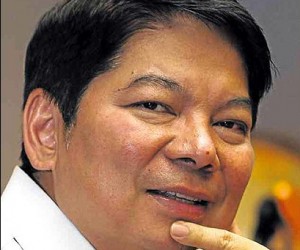Inflation further eased to 2.8% in June
As the country’s inflation continues to ease, the Bangko Sentral ng Pilipinas may soon take steps to ensure that the average increase in consumer prices will not be too discouraging for businesses.
According to BSP Governor Amando Tetangco Jr., the central bank is bent on stabilizing inflation, preventing it from surging too high, or dipping too low.
The BSP “will take appropriate action to help ensure our inflation targets are not breached either the upper or the lower bounds,” Tetangco told reporters Thursday.
In June, the rate of rise in consumer prices came in at 2.8 percent, from the 2.9 percent reported the previous month, on slower price increases in alcoholic beverages, housing, utilities, fuels and transport, the National Statistics Office (NSO) said in a report released Thursday.
The recent inflation figure also marked a sharp slowdown from the 5.2 percent registered in the same month last year. It was the fourth time this year that monthly inflation fell below the 3-percent threshold.
The NSO said that, with the latest price movements, inflation in the first half averaged at 3 percent. The BSP had set the inflation target range at 3 to 5 percent for the full year.
Prices in areas outside Metro Manila followed the same trend as in the national level, decelerating to 3 percent in June from 3.1 percent in May.
Excluding selected food and energy items, core inflation for the whole country still stood at 3.7 percent in June.
Cid L. Terosa of the University of Asia and the Pacific said in a text message that the downtrend could stabilize before the end of the third quarter, noting that low inflation serves to boost purchasing power and create stable conditions for businesses.
Monetary officials said inflation of above 5 percent would be undesirable because it could dent the purchasing power of consumers. A rate of below 3 percent should also be avoided, they added, because it would hurt most businesses.
The benign inflation in June was partly brought on by the easing in global oil prices. The Philippines imports over 90 percent of its oil requirements.
The slowdown in oil prices likewise tempered the increase in transportation costs, NSO said.
Policymakers remain optimistic the country can hit higher growth of 5 to 6 percent this year against the 3.9 percent seen in 2011, supported by strong state spending and low inflation that has attracted foreign capital inflows, helping push the peso to become Asia’s best performer so far this year.
But the euro zone’s debt woes and slowing US and Chinese economies may further weaken external demand and dampen remittances of Filipinos working and living overseas, officials say.
Still, according to HSBC, while global demand is weak, domestic demand in the Philippines actually remained strong.
HSBC said strong domestic demand could counter the impact of declining oil prices on overall consumer prices in the Philippines throughout the rest of the year. As a result, average inflation for the year will likely stay within the range of 3 to 5 percent.
HSBC now expects the central bank to maintain its key policy rates, which it tweaks to influence price movements, at 4 and 6 percent for overnight borrowing and lending, respectively. With reports from Riza T. Olchondra, Reuters















